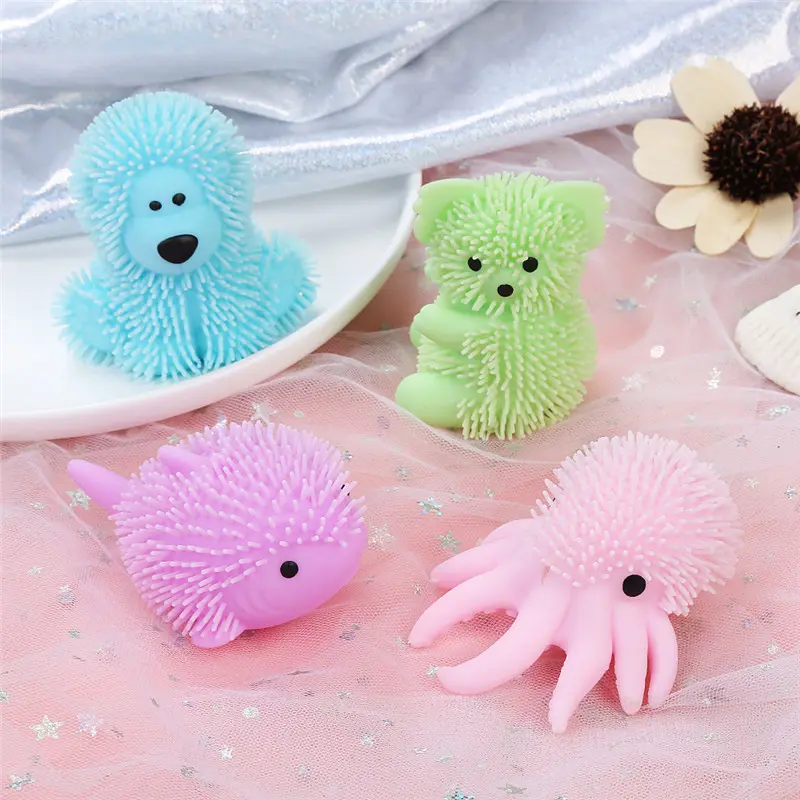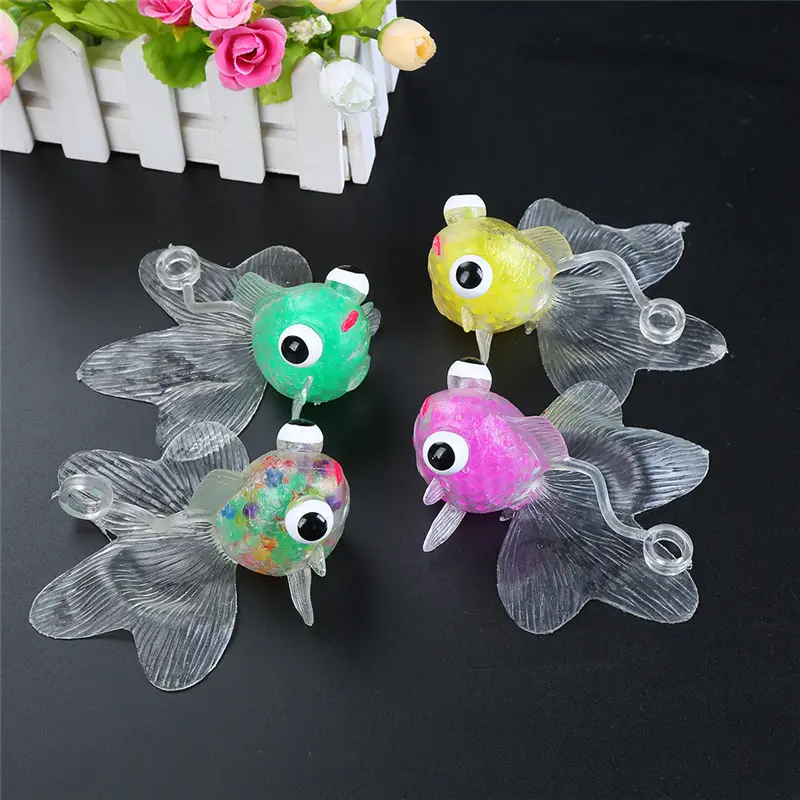How to Choose Stress-Relief Toys to Boost Your Store’s Business: A Complete Guide from Product Selection to Profitability
In today’s fast-paced society, the “stress-relief economy” is experiencing explosive growth at an annual rate of 15% (Source: 2024 China Consumer Trends Report). Whether you’re a stationery store, a boutique, a trendy toy shop, or simply stocking shelves in a supermarket’s snack section, introducing stress-relief toys can be a “golden category” for boosting customer traffic and increasing average order value. However, not all stress-relief toys are suitable for your store—a poor selection can not only lead to inventory overstock but also waste valuable display space. This article will guide you through three key aspects: store positioning, core needs analysis, and profit-making strategy design, to help you accurately select stress-relief toys and unleash the potential of this “small category.”
I. Determine the “target” first, then choose the “product”: Work backwards from your store’s customer base to determine product selection
The first step in selecting stress-relief toys isn’t to consider “what’s popular,” but rather to consider “who will buy it.” The core customer groups of different stores have vastly different needs for stress-relieving toys. Mismatching these needs can turn high-quality products into slow-selling items. The following customer group analysis and product selection recommendations are based on three typical store types:
1. Stores catering to students (stationery stores, campus supermarkets): Prioritize “Appearance + Low Price”
Students (especially elementary, middle, and university students) often seek to relieve stress due to academic pressure and “intermission entertainment,” and their spending power is limited (typically 10-30 yuan per trip). Product selection must meet two key criteria:
Visual appeal: Prioritize products with vibrant colors and cute designs, such as cartoon character squeezing toys (Strawberry Bear and Cinnamon Dog themes), transparent liquid sand stress relief pens (which can also be used as stationery), and mini stress relief tofu blocks (palm-sized, convenient for playtime). These products have inherent social appeal and are prone to attracting copycat purchases among students.
Value for money: Avoid products priced over 50 yuan each. Consider offering “buy two get one free” combos to lower the barrier to entry. Data from a campus stationery store shows that monthly sales of “stress-relieving kneading toys,” priced at 15 yuan each, exceed 300 units, driving a 12% increase in overall average order value.
2. Stores targeting professionals (convenience stores, office boutiques): “Portability + Practicality” as the core
Workers often de-stress in the office or on their commute, and their needs focus on “resolving stress through fragmentation” and “not disturbing others.” When selecting products, avoid noisy and bulky products and focus on the following two categories:
Silent desktop models: Examples include silicone de-stressing keyboards (silent presses), metal fidget spinners (compact and easy to carry), and magnetic fluid de-stressing boxes (visual therapy, silent). These products can relieve work anxiety without disturbing colleagues and are suitable for storage in desk drawers. Practical Functional Products: These incorporate stress-relieving properties into everyday items, such as stress-relieving mouse pads (with kneadable raised ridges), stress-relieving notebooks (with a pressable silicone cover), and stress-relieving coffee cups (with a soft, rubberized surface for a comfortable grip). A convenience store in an office building reported monthly sales of 180 stress-relieving mouse pads after their launch, with 80% of purchases coming from employees of nearby companies.
3. Family-focused Stores (maternity and baby stores, stores near children’s playgrounds): “Safety + Interaction” are key.
Stress-relieving toys for parent-child settings must be both enjoyable for children and reassuring for parents, ideally enabling shared play. When selecting products, strictly control safe materials, prioritizing the following two categories:
Soft, safe products: such as EVA foam decompression blocks (connectable, squeezeable, and odorless), silicone decompression animal figures (soft and chewable, suitable for children aged 3 and above), and inflatable decompression clouds (flapable and durable). Be sure to include “age appropriate” and “material test reports” to allay parents’ safety concerns.
Interactive parent-child products: such as two-player decompression puzzles (requires parent and child to complete together, relieving stress), decompression balls (parents and children can pull each other for interactive fun), and decompression drawing boards (children can doodle to relieve stress while parents can participate in the creation). These products attract parents to spend money on “family time,” and their average order value is typically over 30% higher than single-player products.
II. Avoid Product Selection Pitfalls: Focus on the Three Core Values of Stress Relief Toys
Many store operators often fall into the trap of focusing solely on appearance and ignoring the essentials when selecting stress relief toys, leading to product failures. In reality, truly sustainable stress relief toys must possess the following three core values:
1. Stress Relief: “Real Experience” is More Important Than “Conceptual Marketing”
The core competitiveness of stress relief toys lies in their ability to truly relieve stress, not simply relying on “influencer” hype. To judge a product’s stress relief effectiveness, consider two key factors:
Sensory stimulation: The essence of stress relief is to release negative emotions through sensory feedback such as touch, sight, and hearing. For example, the rebound and soft feel of silicone “stress-relieving toys” when pressed can stimulate tactile nerves and relieve anxiety. The flowing luster and color changes of magnetic fluid decompression boxes can visually distract attention and calm emotions. And the “popping” sound of realistic bubble wrap can relieve stress through hearing (but be mindful of the setting to avoid disturbing others).
Is it reusable? Avoid products designed for single-use decompression, such as paper decompression origami (which are discarded after squeezing) or fragile glass decompression balls (which are easily damaged). Products with high reusability (such as silicone and metal models) can increase customer satisfaction and may even lead to repeat purchases. Data from one boutique shows that reusable decompression toys have a 25% higher repurchase rate than disposable products.
2. Quality and Safety: Don’t let “low prices” ruin your store’s reputation.
Stress-relieving toys are often used for personal use or for children. Quality issues not only increase return rates but can also lead to customer complaints and damage the store’s reputation. When selecting products, pay special attention to the following three details:
Material Testing: Prioritize products with “food-grade silicone certification,” “CE certification,” and “3C certification.” Avoid products using low-quality plastics (which can release harmful substances) or pungent glues (which may cause allergies). Material safety is paramount, especially for products aimed at children and professionals.
Durability: Test the product’s durability, such as whether silicone toys easily tear, metal toys easily rust, and inflatable toys easily leak. A convenience store once introduced easily tearable compression toys, resulting in a return rate as high as 15%, which not only lost profits but also some regular customers.
Compliance: For imported compression toys, confirm the presence of Chinese labels indicating the manufacturer, address, contact information, and recommended age ranges. For children’s toys, avoid small parts (such as detachable beads) to prevent the risk of accidental swallowing. 3. Differentiated Competitiveness: Reject “Homogeneity” and Create Unique Store Features
The current stress-relieving toy market is highly homogenized. If your store only sells “universal” items, it’s difficult to establish a competitive advantage. To stand out, you can differentiate yourself in two ways:
Customized Scenario: Introduce specialized stress-relieving toys tailored to the unique needs of your store. For example, stores near gyms can offer “post-workout stress-relieving” toys (such as silicone muscle-relaxing wands and stress-relieving yoga blocks); bookstores can offer “reading stress-relieving” toys (such as fidget spinners and stress-relieving bookmarks); and flower shops can offer “floral stress-relieving” toys (such as squeezable silicone flower petals, sold alongside fresh flowers).
Niche Designer Products: Avoid popular online products and opt for stress-relieving toys from niche designer brands. These products often have unique designs and a storytelling feel, such as handmade ceramic stress-relieving jars (with irregular patterns on the surface for a unique grip) and wool felt stress-relieving balls (soft and aesthetically pleasing). While the price may be slightly higher, these toys can attract consumers seeking “personalization” and offer profit margins 20%-50% higher than those from influencer brands.
III. From “Product Selection” to “Profit”: 3 Operational Techniques to Boost Sales
After choosing the right product, you need to convert “product” into “sales” through effective display, marketing, and service. The following three operational techniques can help your store maximize the profit potential of stress relief toys:
1. Scenario-Based Display: Allowing Consumers to Experience “Immersive Stress Relief”
The “experience” of stress relief toys is crucial. Simply stacking them on the shelf will make it difficult for consumers to appreciate their value. We recommend using scenario-based display to allow consumers to intuitively see how they can be used:
Office Scenario: Set up a “mini-office” in a corner of the store, placing a desk and computer. Place stress relief keyboards, fidget spinners, mouse pads, and other products on the desk, with a slogan: “Tired from work? Squeeze them for instant energy.” For parent-child scenarios: Set up a “Parent-Child Experience Area” with small tables and chairs, allowing parents and children to try out stress-relieving puzzles and animal models. Next to the area is a sign that reads, “Parent-child play, stress-relieving and heartwarming.”
For commuting scenarios: Display a “commuter backpack” at the entrance, filling it with mini stress-relieving boxes, stress-relieving pens, and other products. A sticker reads, “Little joys on the commute, relieving traffic anxiety.”
After implementing a scenario-based display, a boutique saw a 40% increase in trial rates for stress-relieving toys and a 25% increase in conversion rates, demonstrating significant results.
2. Precision Marketing: Engage consumers with “pain points”
The core of marketing lies in “hitting the needs,” not simply “speaking slogans.” Different marketing pitches can be designed for different customer groups, ensuring consumers feel “This toy is made for me”:
For students: “During your 10-minute break, pinch it to relieve exam stress and focus more on studying.”
For professionals: “Don’t worry about working overtime! This small desk toy is quiet, relaxing, and will boost your work efficiency.”
For parents: “What if your child cries? Play with a stress-relieving toy. It’s safe, worry-free, and makes parent-child time more enjoyable.”
In addition, a “stress-relieving test area” can be set up at the store entrance, displaying a simple stress-relieving questionnaire (e.g., “Do you often feel anxious?” “How much time do you spend each day feeling anxious?”). After consumers complete the questionnaire, the corresponding stress-relieving toy can be recommended, increasing trust in the personalized recommendations.
3. After-sales Service and Repeat Purchase: Retaining Customers with “Service”
Although stress-relieving toys are inexpensive per unit, excellent after-sales service can increase user stickiness, lead to repeat purchases, and generate word-of-mouth advertising. We recommend optimizing after-sales service from two perspectives:
No-questions-asked returns and exchanges: Promise a “7-day no-questions-asked return and exchange” policy (provided the product does not affect resale) to reduce consumer hesitation. Data from a stationery store shows that after introducing no-questions-asked returns and exchanges, sales of stress-relieving toys increased by 18%, and the return rate was only 5%, far below the industry average.
Exclusive member benefits: Create a membership profile for customers who have purchased stress-relieving toys, regularly send new product information (e.g., “The stress-relieving toys you bought last time have new models, members get 20% off”), or offer benefits such as “free shipping for repeat customers who purchase 3 or more” and “customized items exclusively for members” to increase repeat purchases.
Conclusion: Small toys, big business; choosing the right one is the key to traffic
Stress-relieving toys may seem like a “small category,” but they carry a huge demand for stress-relieving products. For store operators, choosing the right stress-relieving toy not only adds a profit point but also enhances the store’s competitive differentiation by precisely meeting demand, and can even become a key to attracting customers. Remember: good stress-relieving toys aren’t about “selling products” but “selling solutions”—addressing students’ academic stress, professionals’ work anxieties, and parents’ need for parent-child interaction. By focusing on your customer base, core values, and excellent operational services, your store can capitalize on the “stress-relieving economy.”
Post time: Sep-26-2025

